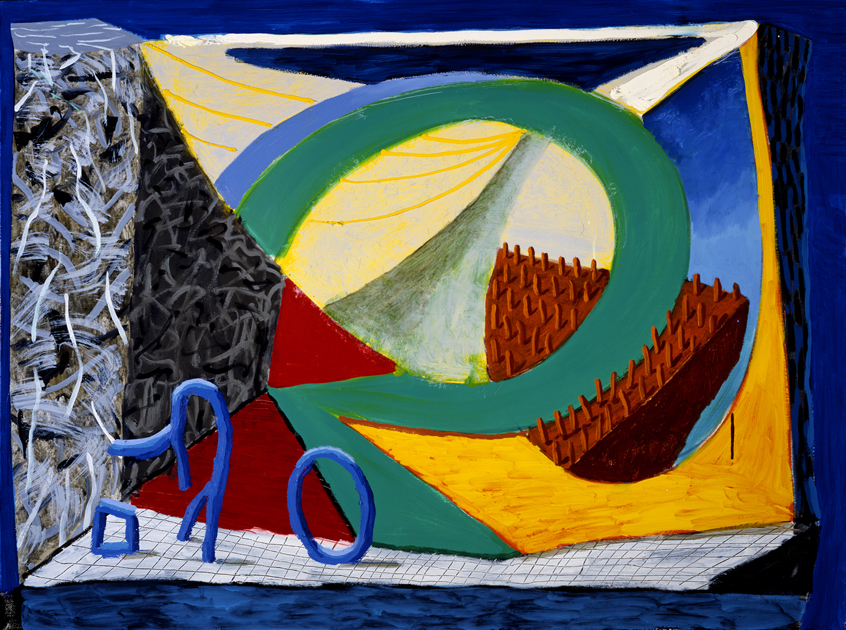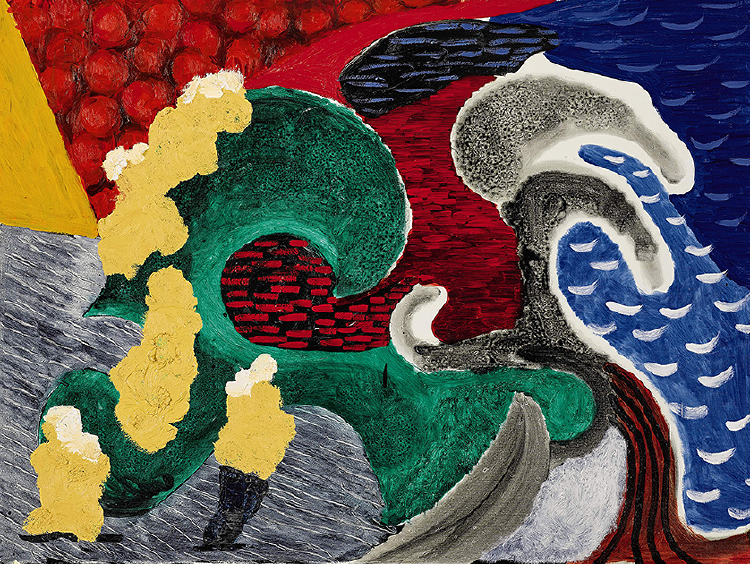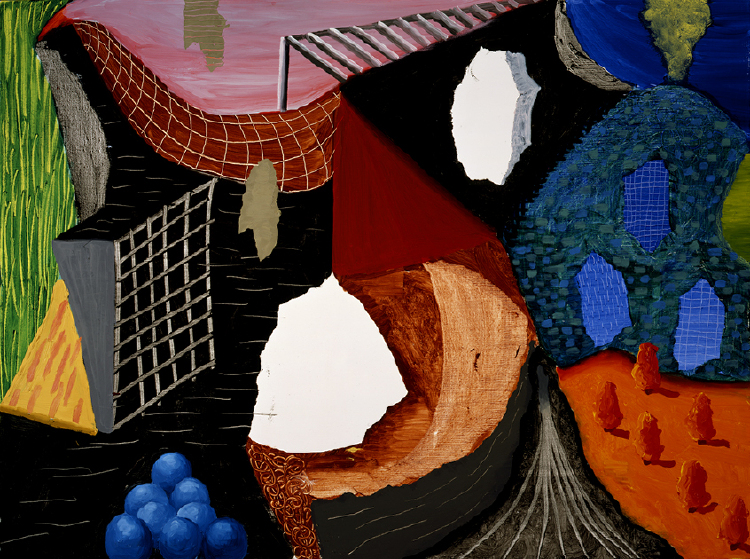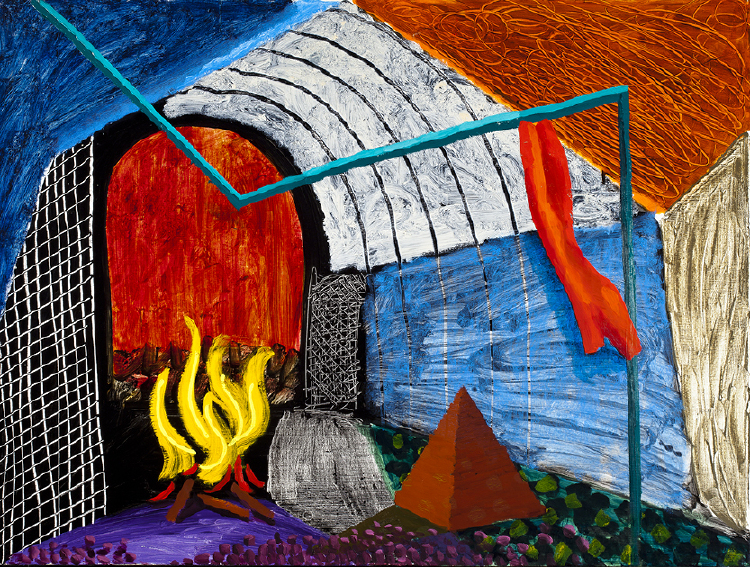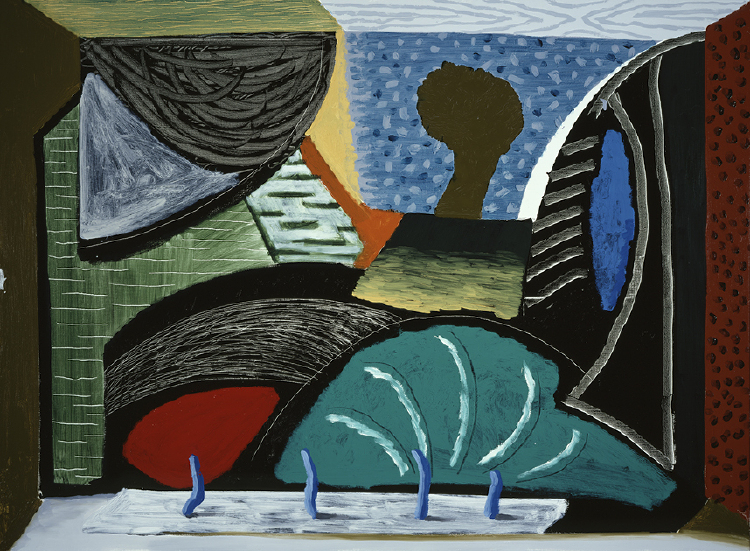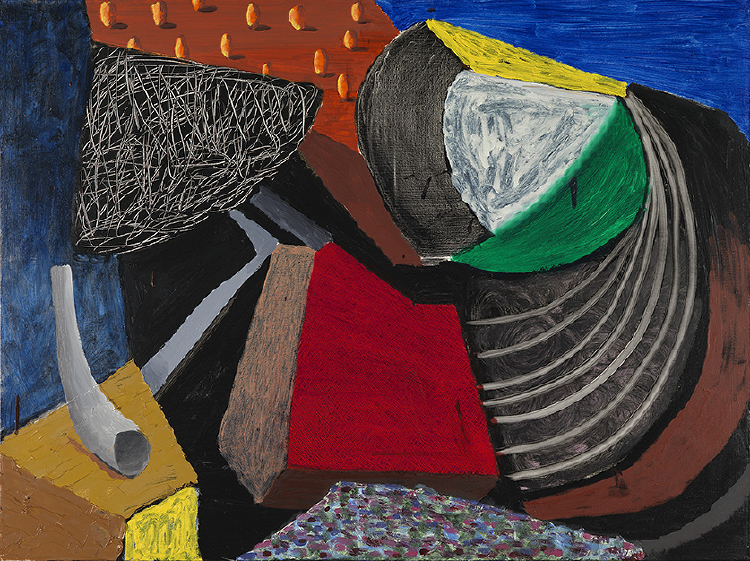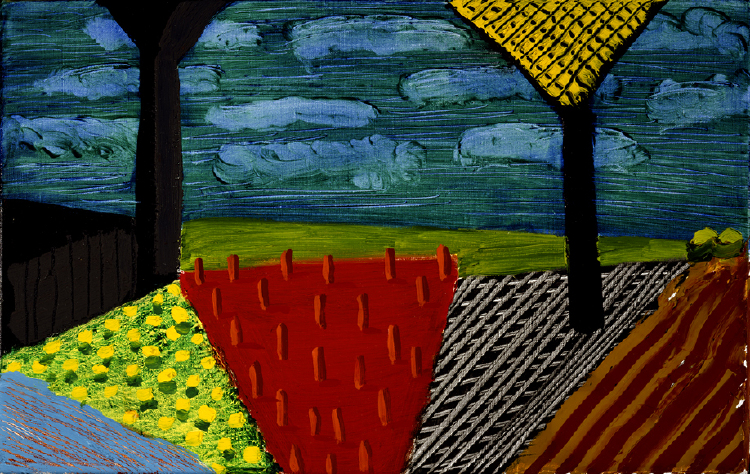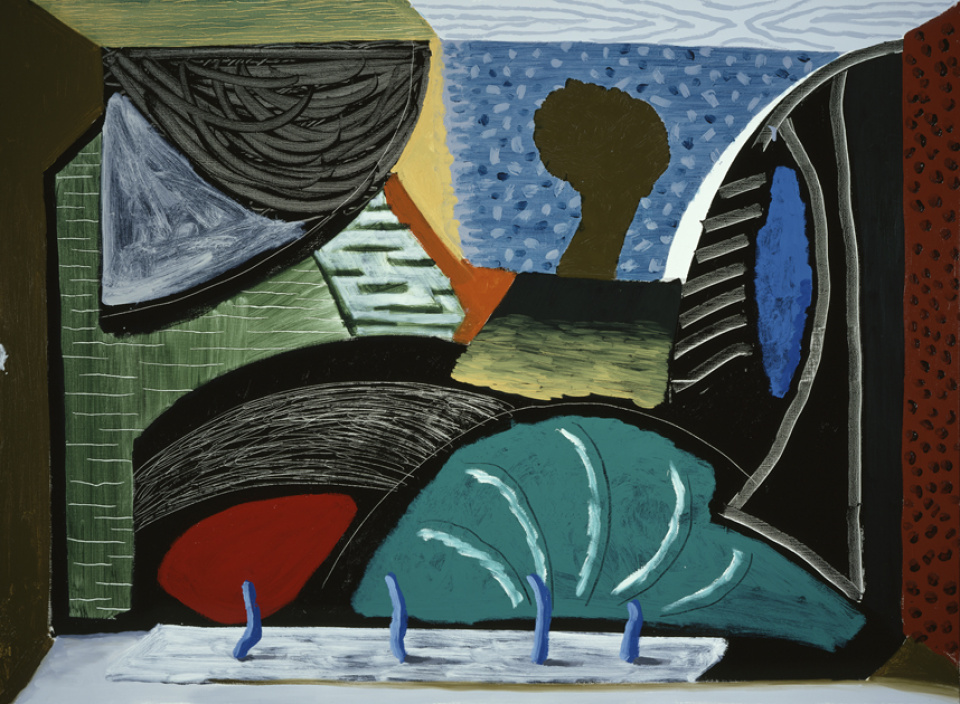
Back in the studio
With his health returning to normal after his heart attack, Hockney engages in moderate exercise and long hours in the studio. His production is constant over numerous [NESTED]mediums, from traditional oil painting to printmaking. He also experiments with drawing on his Mac II FX using Oasis software.

I’m having fun. If any artist tells you he’s not having fun in his studio, there is something wrong with him. He has to, even if his work is pessimistic. Art has to have some hope because it believes it can get a message across.
Driving through the American West
For the journey home to Los Angeles after a stay in Chicago to finalize the stage design for Turandot, Hockney drives his Lexus along with friends and a rented RV, detouring to Monument Valley and the Grand Canyon. Back in L.A., his new paintings evoke the American West in abstract motifs that echo that spectacular landscape or, alternatively, his theater sets.
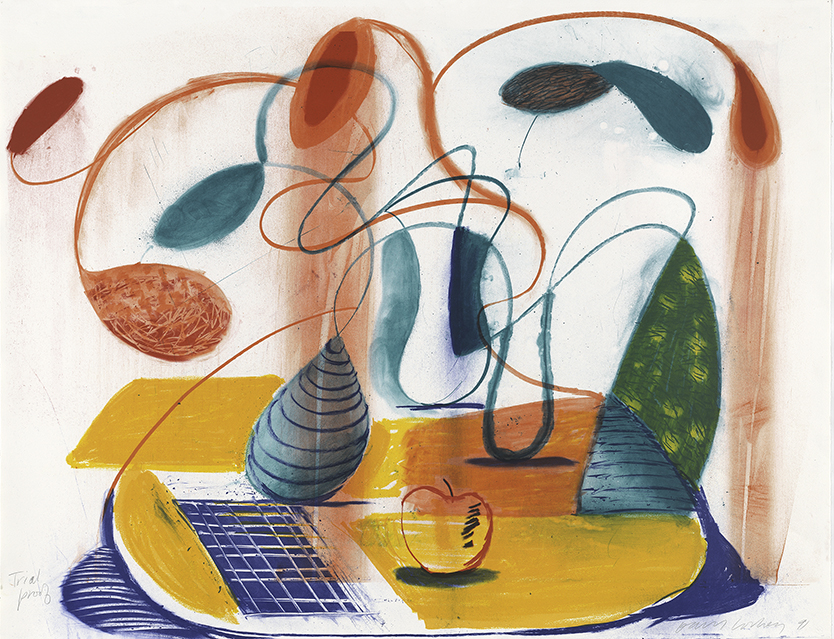
Opera
The appetite for Hockney’s opera designs is unabated, and another commission follows on Turandot’s heels, for a staging of Richard Strauss’s Die Frau ohne Schatten at [NESTED]the Royal Opera House at Covent Garden. Directed by John Cox, it will open in London in late 1992.
The first thing I made for Die Frau, on a small model, was an abstract representation of a river, like a snake. I put little dots on it which were actually derived from the textures that were appearing in these paintings. Turandot is mostly architectural interiors; even the garden, which is nearest to nature, is a Chinese garden, stylized, formal, not raw nature. In Die Frau, on the other hand, we are dealing with nature in the wild ... and I knew these paintings were going to influence its design.
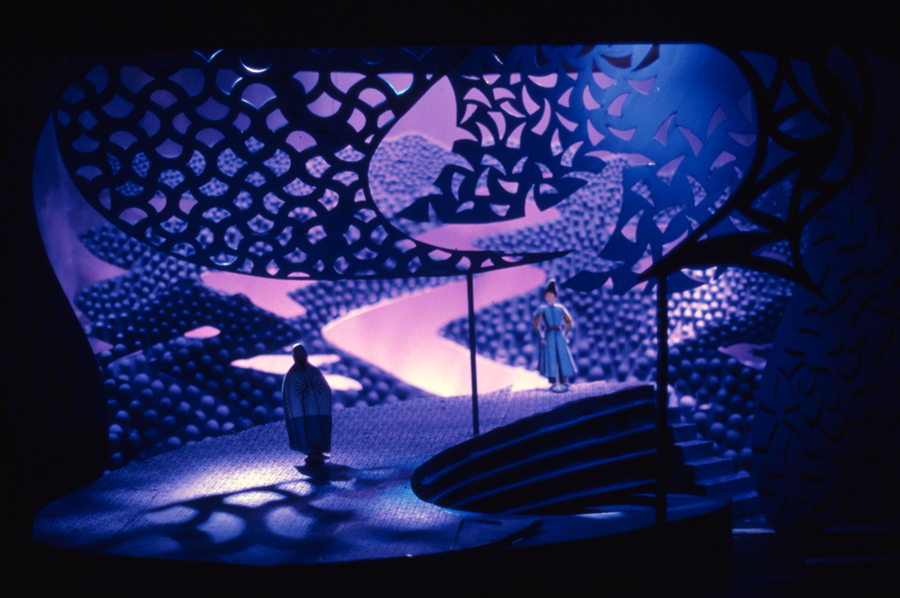
Exhibitions
Solo
- David Hockney’s New Electronic Snaps, National Museum of Photography, UK Film and Television, Bradford, UK (May 29–Sep 29); catalogue.
Group
- Seven Master Printmakers: Innovations in the 1980s, Museum of Modern Art, New York, NY, USA (May 16–Aug 13); catalogue.
- Pop Art, Royal Academy of Arts, London, UK (Sep 13–Dec 15), travels to Museum Ludwig, Cologne (Jan 23–Apr 19, 1992); Museo Nacional Centro de Arte Reina Sofía, Madrid (Jun 16–Sep 14, 1992); and Montreal Museum of Fine Arts (Oct 23, 1992–Jan 24, 1993); catalogue.
- Memoire de la Liberté, Musée national d’art moderne, Centre Georges Pompidou, Paris, France (Oct 1–Nov 30); catalogue.
- Doll Boy, Hamburger Kunsthalle, Hamburg, Germany (Nov 6, 1991–Jan 12, 1992); catalogue.
Publications
Publications
- Hockney’s Alphabet, edited by Stephen Spender, London: Faber & Faber.
Honor
Honor
- Elected Royal Academician, Royal Academy of Arts, London.
